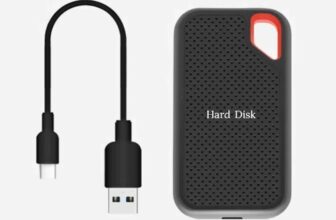
What is Figma?
Figma is a cloud-based interface design tool that allows users to design, prototype, and collaborate on user interface designs. It has a browser-based interface, making it accessible from anywhere with an internet connection, and it supports real-time collaboration, allowing multiple users to work on the same design simultaneously. Figma is used by designers, product managers, developers, and organizations of all sizes to create and iterate on their user interface designs. It offers a range of features, including vector networks, components, and libraries, that make it a popular choice for modern design workflows.
How Figma Started?
How Figma is Built?
Figma is built as a cloud-based design tool, meaning that it runs on servers managed by Figma and is accessed through a web browser or a desktop app. The tool uses a combination of technologies, including JavaScript, React, and WebSockets, to provide real-time collaboration and synchronized design sessions for teams. Figma stores design files on its servers and uses encryption to keep the data secure. The company also employs various security measures to protect users’ data and ensure that their designs remain confidential. Figma is designed to be fast, intuitive, and scalable, making it a popular choice for designers, teams, and organizations of all sizes.
Can figma Open psd file?
No, Figma does not have the capability to directly open .psd (Photoshop) files. However, you can export your .psd file to .png or .jpeg format and then import it into Figma. This way you can work with the exported image in Figma but you will not be able to make any changes to the individual layers as you would in Photoshop.
Can Figma Open eps Files?
How Does Figma Builds Product?
Figma is used by product teams to build digital products in several ways. Here are some of the most common ways Figma is used in the product building process:
- Design: Figma is used to design user interfaces, screens, and interactions for digital products. Teams can use Figma to create wireframes, prototypes, and high-fidelity designs, which can then be shared and reviewed with stakeholders.
- Collaboration: Figma enables real-time collaboration between designers, product managers, developers, and other team members. Teams can work together in the same file, leaving comments and feedback, and seeing each other’s changes in real-time.
- Communication: Figma is used to communicate design ideas and concepts to stakeholders, both within and outside of the product team. Teams can create presentations and share prototypes with stakeholders, who can then provide feedback and insights.
- Prototyping: Figma allows teams to create interactive prototypes that simulate the final product. Prototypes can be tested and validated by stakeholders, and used to gather feedback on the design and user experience.
- Development: Figma can be used to support the development process by providing a clear and up-to-date design specification. Developers can access the design file and use it to build the product, ensuring that the final product is true to the original design.
By using Figma in these ways, product teams can streamline the product building process and ensure that their designs are consistent, accurate, and validated before development begins.
How Figma Multiplayer Works?
Figma’s multiplayer feature enables real-time collaboration between multiple users within a single design file. Here’s how it works:
- Sharing: To collaborate with others in Figma, you can share a file with team members or invite them to a specific project. They can then access the file and start working on it with you.
- Concurrent editing: When multiple users are in a file, they can make changes to the design at the same time. Figma uses a version control system to manage changes, so everyone can see the changes in real-time.
- Notifications: Figma sends notifications to users when someone makes a change to the design. This way, everyone is always aware of the latest updates.
- Comments: Figma has a built-in commenting system that allows users to leave comments and feedback on specific parts of the design. Comments can be resolved and closed, and a history of comments is kept for reference.
- Locking: Figma allows users to lock specific elements of the design to prevent others from making changes. This can be useful when working on a shared file with multiple designers.
- History: Figma keeps a complete history of changes to a design file, allowing users to revert to earlier versions of the design if needed.
By using Figma’s multiplayer feature, teams can work together on designs in real-time, regardless of their location. This streamlines the design process and helps teams to make quicker and more informed decisions.
Are Figma Plugins Free?
Some Figma plugins are free, while others are paid. You can find both free and paid plugins in the Figma Community plugin directory. You can also create and publish your own Figma plugins for others to use, either for free or for a fee.
Which is Better Figma or Adobe xd?
Both Figma and Adobe XD are popular design tools used for UI/UX design and have their own strengths and weaknesses. The choice between the two depends on the specific needs and preferences of the user.
Figma is known for its strong collaboration features, making it a popular choice for teams and design projects that require multiple stakeholders. It also has a free version, making it more accessible for small businesses and individuals.
Adobe XD, on the other hand, is part of the Adobe Creative Cloud suite and integrates well with other Adobe tools like Photoshop and Illustrator. It also has more robust prototyping and animation capabilities.
In conclusion, both Figma and Adobe XD are great tools and the choice between them will depend on your specific project requirements and preferences.
Why Figma is Better?
Figma is considered better for several reasons, including:
- Collaboration: Figma allows multiple users to collaborate and make design changes in real-time, making it a great option for teams.
- User-friendly interface: Figma has a modern, intuitive interface that makes it easy for designers of all skill levels to use.
- Browser-based: Figma is a browser-based tool, which means that it can be accessed from anywhere with an internet connection, making it convenient for remote teams.
- Vector Networks: Figma’s vector networks allow for easy scaling and flexible design, which is particularly useful for responsive web design.
- Design System Support: Figma makes it easy to create and manage design systems, which can help teams maintain consistency in their designs.
- Prototyping: Figma has robust prototyping features that allow designers to create interactive prototypes and share them with stakeholders for feedback.
These are just a few of the many reasons why Figma is considered a better design tool by many.
Why Figma is Better than Sketch?
Figma is often compared to Sketch, and is considered better by many for several reasons, including:
- Collaboration: Figma allows multiple users to collaborate and make design changes in real-time, making it a great option for teams. This feature is not available in Sketch.
- Browser-based: Figma is a browser-based tool, which means that it can be accessed from anywhere with an internet connection, making it convenient for remote teams. Sketch, on the other hand, is a desktop application.
- Auto-Layout and Constraints: Figma has built-in auto-layout and constraints capabilities, which make it easier to create responsive designs. Sketch does not have these features.
- Design System Support: Figma makes it easy to create and manage design systems, which can help teams maintain consistency in their designs. Sketch does not have a built-in design system support.
- Prototyping: Figma has robust prototyping features that allow designers to create interactive prototypes and share them with stakeholders for feedback. These features are not as advanced in Sketch.
- Integration with other tools: Figma integrates with a growing list of tools such as InVision, Marvel, and Abstract, making it easier for teams to work with other tools in their workflow. Sketch does not have as many integrations.
These are just a few of the many reasons why Figma is considered a better design tool than Sketch by many.
How Does Figma Helps Developers?
Figma helps developers in several ways:
- Design Collaboration: Figma allows for real-time collaboration between designers and developers, reducing back and forth communication and ensuring that everyone is working with the most up-to-date version of a design.
- Design Handoff: Figma has built-in tools that make it easy for developers to access design specs, measurements, and code snippets, making the transition from design to development smoother and faster.
- Design System Creation and Management: Figma makes it easier for teams to create, manage, and maintain a consistent design system, which can then be used as a reference by developers to ensure consistency across multiple products and platforms.
- Prototyping: Figma allows designers to create interactive prototypes of their designs, which can be tested and demonstrated to developers.
Overall, Figma helps to streamline the design and development process by providing a shared workspace for both disciplines, improving communication and collaboration, and reducing the time and effort required to bring designs to life.
How Does Figma Make Money?
Figma makes money by charging for its premium plans that offer additional features, storage, and collaboration options for teams and enterprise customers. The company also earns revenue from selling licenses for its Figma API and from offering custom solutions for larger organizations.
How Figma Ships Product?
igma ships its product primarily through a SaaS (Software as a Service) model, where customers access the product through the internet using a web browser or a desktop app. The company continuously updates and improves its product through regular releases, adding new features and fixing bugs. Figma also offers premium plans with additional features and support for larger teams and enterprise customers. Customers can sign up for a plan, manage their account, and receive customer support through Figma’s website.
Are Figma Files Private?
The privacy of Figma files depends on the privacy settings selected by the creator of the file or the owner of the team. Figma offers three types of privacy options:
- Private: Only people who have been invited to the file can access it.
- Team: Only members of the same team can access it.
- Public: Anyone with the link can access it, but it will not be searchable.
It is up to the creator or owner to choose the appropriate privacy setting based on their needs and requirements.
Are Figma Drafts Private?
By default, drafts in Figma are private, which means that only the person who created the draft and any collaborators they added to the file can see it. Depending on the privacy settings for the file, a draft is not accessible for other team members to view or edit until it is published.
So, until you’re ready to share your drafts with others, you can keep them private by waiting to publish them.
Are Figma Prototypes Responsive?
Prototypes created with Figma can be viewed on a variety of screens and devices and are responsive. Designers can use responsive design elements like auto-layouts, constraints, and breakpoints to create prototypes with Figma. With the help of these features, designers can produce screen-responsive prototypes that offer the best viewing experience on a variety of gadgets, including desktop computers, laptops, tablets, and smartphones.
Figma additionally provides the choice to preview prototypes on particular devices, enabling designers to see how their prototypes will appear and function on various screens.
Are Figma Plugins safe?
In general, Figma plugins are regarded as secure. When installing and using any software, including Figma plugins, it is always advisable to use caution and pay attention to the source and permissions. To make sure a plugin won’t jeopardize your data or the security of your Figma account, you should only install them from reputable sources, such as the Figma community or the official plugin store. You should also carefully read the description and permissions of a plugin before installing it.
How to Use figma?
Using Figma is straightforward and easy. Here are the basic steps to get started with Figma:
- Sign up for a Figma account: Go to the Figma website and sign up for a free account. You can also sign up with your Google or Microsoft account.
- Create a new file: Click the “Create New File” button on the Figma dashboard to create a new design project. You can choose from various templates, or create a blank file.
- Add frames and elements: Figma uses frames as the basic building blocks for your designs. You can add frames to your canvas and start adding elements like text, shapes, images, and more.
- Work with layers: Figma has a robust layer system that makes it easy to organize and manage your designs. You can create nested layers, name layers, and use the Layers panel to see an overview of your design’s structure.
- Use the Properties panel: The Properties panel allows you to fine-tune your design elements, such as changing colors, font styles, and more.
- Collaborate with others: Figma has built-in collaboration features that allow you to work with others in real-time. You can invite team members to work on your designs, leave comments, and see changes as they happen.
- Publish and share your designs: Once you’re done designing, you can publish your designs and share them with others. You can generate shareable links, embed your designs on websites, and more.
These are the basic steps to get started with Figma. As you become more familiar with the tool, you can explore more advanced features and techniques to enhance your designs






